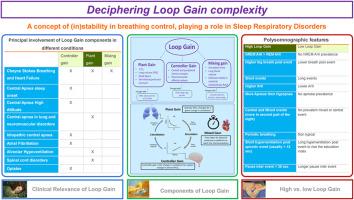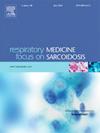解读环路增益的复杂性:了解阻塞性睡眠呼吸暂停患者病理生理特征的入门指南
IF 3.5
3区 医学
Q2 CARDIAC & CARDIOVASCULAR SYSTEMS
引用次数: 0
摘要
环路增益(LG)是从工程学中借用的概念,用于描述负反馈下电路的稳定性。简单地说,LG 衡量呼吸控制系统对呼吸变化的反应。LG 值越高,表明呼吸中的微小干扰都会引起夸张的反应,从而可能导致呼吸模式的不稳定和振荡。相反,低 LG 则意味着系统对干扰的反应较为平缓,从而导致呼吸稳定和调节良好。然而,由于环路增益在各种睡眠呼吸障碍、睡眠阶段、体位以及与其他病理生理特征的相互作用中具有动态性质,因此理解环路增益的概念面临挑战。最近,人们努力寻找一种无创方法来评估 LG,一些证据表明,可以从多导睡眠图中提取有关病理生理特征的信息。在临床上,医生在管理阻塞性睡眠呼吸暂停(OSA)患者时,有必要了解 LG 的复杂性,因为 LG 异常是 OSA 的一种独特病理生理表型。具体来说,某些患者的高 LG 是导致睡眠呼吸暂停的主要因素,从而影响治疗效果。例如,与 LG 正常的患者相比,LG 偏高的患者对持续气道正压(CPAP)或口腔矫治器等疗法的反应可能不同,或者他们可以接受特定药物或联合疗法的治疗。因此,了解 LG 对于精确评估 OSA 患者至关重要,也是优化个性化有效治疗方法的基础。本文章由计算机程序翻译,如有差异,请以英文原文为准。

Deciphering loop gain complexity: a primer for understanding a pathophysiological trait of obstructive sleep apnea patients
Loop Gain (LG), a concept borrowed from engineering used to describe the stability of electrical circuits under negative feedback, has emerged as a crucial pathophysiological trait in sleep respiratory disorders. In simple terms, LG measures how the respiratory control system reacts to changes in breathing. A high LG suggests that minor disturbances in breathing prompt exaggerated responses, potentially leading to instability and oscillations in respiratory patterns. Conversely, a low LG implies that the system responds more gently to disturbances, resulting in stable and well-regulated breathing. However, understanding the concept of loop gain presents challenges due to its dynamic nature across various sleep respiratory disorders, sleep stages, positions, and interactions with other pathophysiological traits. Recent efforts have aimed to identify a non-invasive method for assessing LG, with some evidence suggesting that information regarding pathophysiological traits can be extracted from polysomnography. There exists a clinical imperative for physician to unravel the intricacies of LG when managing Obstructive Sleep Apnea (OSA) patients, because LG abnormalities delineate a distinct pathophysiological phenotype of OSA. Specifically, certain patients exhibit a high LG as the primary factor driving sleep apnea, influencing treatment outcomes. For instance, individuals with high LG may respond differently to therapies such as continuous positive airway pressure (CPAP) or oral appliances compared to those with normal LG, or they can be treated with specific drugs or combination therapies. Thus, understanding LG becomes paramount for precise assessment of OSA patients and is fundamental for optimizing a personalized and effective treatment approach.
求助全文
通过发布文献求助,成功后即可免费获取论文全文。
去求助
来源期刊

Respiratory medicine
医学-呼吸系统
CiteScore
7.50
自引率
0.00%
发文量
199
审稿时长
38 days
期刊介绍:
Respiratory Medicine is an internationally-renowned journal devoted to the rapid publication of clinically-relevant respiratory medicine research. It combines cutting-edge original research with state-of-the-art reviews dealing with all aspects of respiratory diseases and therapeutic interventions. Topics include adult and paediatric medicine, epidemiology, immunology and cell biology, physiology, occupational disorders, and the role of allergens and pollutants.
Respiratory Medicine is increasingly the journal of choice for publication of phased trial work, commenting on effectiveness, dosage and methods of action.
 求助内容:
求助内容: 应助结果提醒方式:
应助结果提醒方式:


